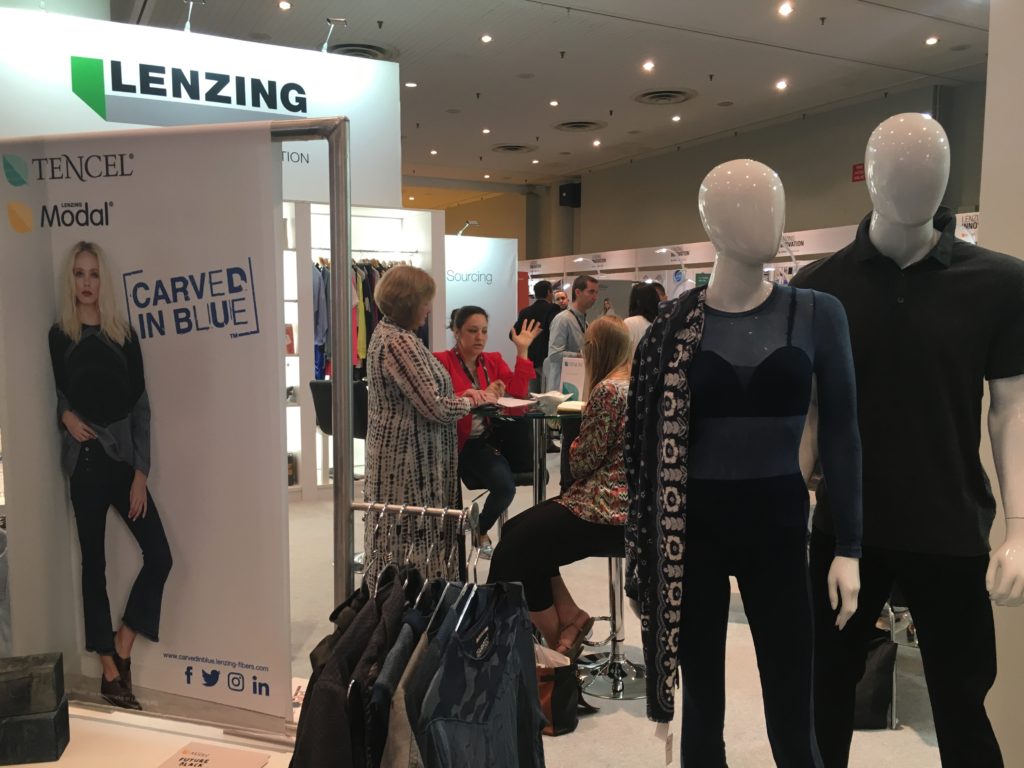
Fibers: What’s Performance, What’s Preferred and What’s Happening With Pricing
On a scale of one to 10, when it comes to sustainability, industry experts think the apparel sector is roughly at a one.
The good news, however, is that innovation is abundant and times are exciting for apparel.
At a Texworld USA panel Wednesday titled, “Performance and Preferred Fibers,” experts set out to explain which is which and what’s on deck for each.
For one, a preferred fiber is one that’s along the spectrum of sustainability, Tricia Carey, Lenzing’s head of global business development for denim, explained. TENCEL® branded lyocell fibers are one such example of a preferred fiber as it’s a cellulosic made from wood pulp in a closed loop system. Lenzing’s new Refibra™ lyocell fibers, made from wood and cotton scraps, is another example.
A performance fiber is one that does something for the wearer, like wicks their sweat to keep them dry, or keeps odor at bay post workout, or helps them stay cool in warm climes. And though performance fibers may not be sustainable in the same way that preferred fibers might be, some still do their part to lessen apparel’s footprint on the environment.
“One of our brands says you could wear the garment for three weeks and then dry it out and you’re not going to stink after,” said Karin Mueller, VP of marketing for Noble Biomaterials, a leader in antimicrobial and conductivity solutions for textile materials. Noble’s flagship brands X-STATIC®, XT2® and CIRCUITEX™ provide performance functions like odor elimination, infection prevention/management, biometric monitoring and conductive protection benefits, and the company counts Adidas, Lululemon, Ralph Lauren and Naked among its partner brands. The idea, as Mueller continued, is that if a consumer can wear a garment for three weeks without worrying about odor, that means they’re washing it less, which means less water use and a smaller environmental footprint.
Either way, sustainability starts at the beginning of a product’s life cycle.
“Sustainability is something that you build on starting from the fiber,” said David Sasso, VP of sales for Samil Spinning Co. & Buhler Yarns. “Lenzing is a great partner and we try to take that and minimize our output…The other side is the consumer laundering. That’s where the focus needs to be because that’s the most major part of waste.”
A large portion of the work it will take to move sustainability in the apparel sector upward from its nascent stages at a one out of 10, will be both in re-educating the consumer and realigning their thoughts on price when it comes to preferred and performance fibers.
Hardly a sustainability talk goes off without raising the question: Will the consumer pay for it?
The short answer is yes—provided the product actually does what it promises to do and improves their comfort and performance to a level they’d gladly dish out extra to ensure.
“What happens with some of these technologies is, if you have someone saying odor free and it really isn’t odor free or it washes out in a few washes, that hurts the whole space,” Mueller said. “To the end consumer, that it works and provides the benefits that they’re looking for, we see them paying for it.
The long answer to whether a consumer will pay more for performance or sustainability is that the apparel industry’s whole approach to pricing and the perceptions consumers have must be altered.
“I don’t think the prices are accurate for what products are now,” Carey said. “I think we have a long way to go to get to the right place where we need to be.”
Currently, the fast fashion wave has encouraged some consumers to buy for the short-term and to discard in no time and replace just as quickly. Going forward, it will be about getting consumers to buy for longevity and to spend a little bit more because they know they are getting a quality garment that does what they want it to do and will last much longer than one season.
So what’s next for preferred and performance?
Maybe fibers that react and apply a type of medical application when they sense blood on a wearer, or perhaps putting on a Lululemon workout shirt and having it automatically give data about the body’s condition to an Apple Watch, or cooling effect fibers that can keep the wearer several degrees cooler than what it can now.
“I think there’s a lot more to come on conductivity and the biomimicry area,” Carey said. “With textiles, we’re always a little behind. When you look at electronics, when you look that the Amazon Echo that’s telling you about your day and making plans for you, we have a lot to catch up to.”
Whatever comes next, the panelists agreed that performance is here to stay—and it will find its way into more apparel applications.
“I think it’s becoming the standard,” Mueller said. “Whether its wicking, whether its cooling, the idea is that you can have that experience all day and not just for the two hours you’re working out.”






